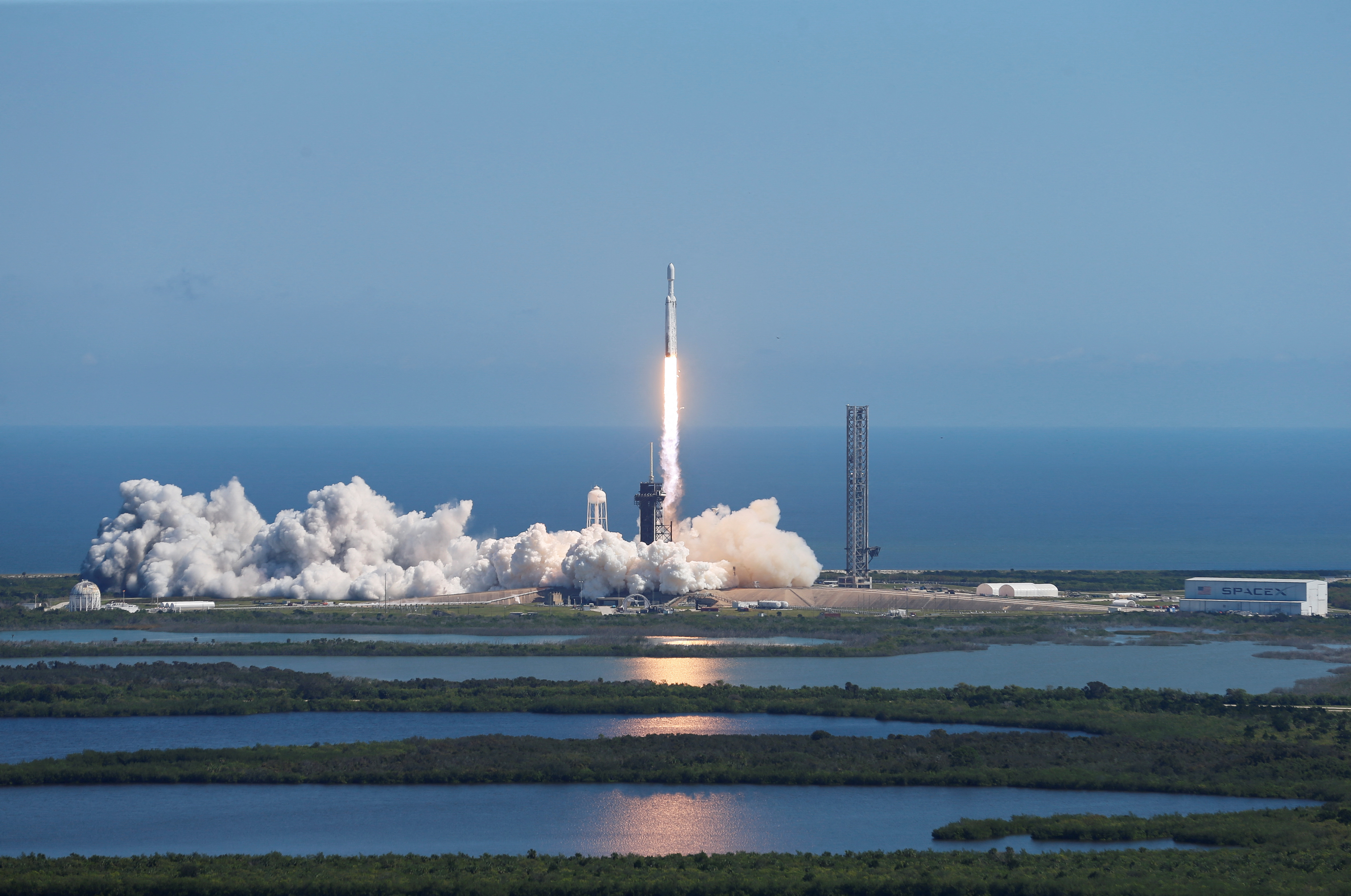
Elon Musk’s ‘Starship’ project did something spectacular this week. The 160-tonne booster landed safely in the arms (or rather, the ‘chopsticks’) of a rocket-catching device that will soon allow the rapid turn-around and reuse of heavy-lift vehicles.
When fully operational, probably within two years, Starship will cut the cost of putting things into orbit as much as fiftyfold. Maybe it will eventually go to Mars. But in the end it’s just a better tool – a giant spacefaring truck.
The scientific event of the year was the launch on Monday of Musk’s Spacex Europa Clipper mission from Cape Canaveral. It’s carrying the biggest unmanned vehicle ever sent beyond Earth orbit. It will take more than five years to reach Europa, but when it finally gets there (almost three billion km. later) it may be able to tell us what we really want to know.
“If we discover life so far away from the Sun, it would imply a separate origin of life to the Earth,” explained Mark Fox-Powell, a planetary microbiologist at Britain’s Open University. “That is hugely significant, because if that happens twice in our solar system, it could mean life is really common.”
It doesn’t need to be very complex life, which is probably unlikely to evolve at the bottom of Europa’s sunless sea. We already know that in more favourable circumstances life will evolve into a multitude of forms, so all we need to learn from Europa is that some form of life, even simple microbes, has already come into existence there.
The real question is whether we are alone in the universe. People don’t wander around asking themselves that question, of course, but it is the ultimate context-setter. Are we unique, the only bearers of life in an otherwise barren universe, or are we just one more species having a brief fling on one more planet in one more galaxy?
Europa, one of Jupiter’s four big ‘Galilean’ moons, could hold the answer. It’s big – about the size of Earth’s own Moon – and it appears to have a giant saltwater ocean up to 150 km. deep.
That ocean probably froze over very early in Europa’s history, perhaps as early as 4.5 billion years ago, because Europa is five times farther from the Sun than we are. Indeed, the sheath of ice around Europa is estimated to be fifteen to twenty-five km. thick.
However, beneath that ice there is at least as much liquid water as there is on Earth. Europa revolves around Jupiter, whose immense gravitational pull stretches and squeezes the moon’s rock and ice. That creates enormous tidal forces even in solid rock and causes enough friction and heat to keep an entire ocean molten.
There is no light beneath the ice so photosynthesis, which provides the energy for complex life, is not possible. However, living creatures using different biochemical pathways (chemosynthesis) thrive in complete darkness around ‘hydrothermal’ volcanic vents in the deepest parts of Earth’s oceans. That may even be where life on Earth got its start.
If similar living creatures exist on Europa, they would transform our understanding of the universe, for there is no way that they could be related to earthly life. Even more than the distance, the thick carapace of ice that isolates Europa’s ocean from the rest of the universe means that any life there will have had a completely separate origin.
The rest follows almost automatically. If two unrelated instances of life have arisen in this single planetary system, then it’s a safe bet that life in the universe is as common as dirt. Indeed, there are at least four ice-covered ocean moons in the outer Solar system, and maybe as many as eight, so there could even be many different lineages of life circling our own Sun.
But let’s not get ahead of ourselves. We don’t yet know if there is life in Europa’s ocean, and finding out will be very hard. The Europa Clipper mission will only be able to do a low fly-by of Europa for a couple of hours every three weeks, because longer immersion in Jupiter’s huge radiation zone would fry its electronics.
Europa Clipper carries nine instruments to explore and measure the moon’s surface, its magnetic field and (remotely) its ocean, but the jackpot would be a sample of the seawater, ideally with living things in it. If they get lucky, Nasa‘s scientists could even get that, because some of them think occasional plumes of that seawater erupt from the surface.
Eat your heart out, Christopher Columbus. This is real exploration!
Gwynne Dyer’s latest book is Intervention Earth: Life-Saving Ideas from the World’s Climate Engineers





